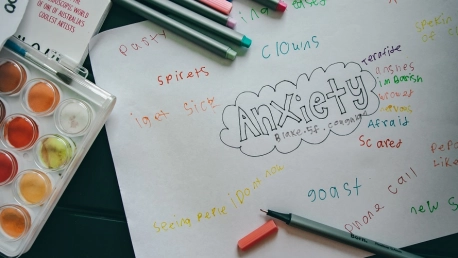When today’s adults look back on their childhood years, they usually remember feeling happy, loved, and protected—both at home and in school. However, with recent studies showing that 20% of children and teenagers are diagnosed with a mental disorder that causes impairment, experts wonder if the same will be true for future adults. As children grow to become teenagers and young adults, they seem to struggle more with mental disorders. According to the studies, approximately 27.9% of US teenagers, aged 13 to 17, now suffer from at least two mental disorders.
Multiple studies conducted in the US and abroad point to the fact that most adult mental health conditions—such as anxiety, behavioral disorders, mood disorders, obsessive-compulsive disorder, and phobias—appear in early childhood and teenage years. The most frequent mental disorder that children and teenagers struggle with is anxiety, which has the potential to become an even greater problem once they reach adulthood. Like anxiety, depression is another major problem for children and teenagers, and the number of children suffering from depression and anxiety have increased dramatically during the pandemic. This prompted the American Academy of Pediatrics to declare a state of emergency regarding childhood and teenage mental disorders.
The first step in solving any problem is recognizing there is one, and childhood and adolescent mental disorders are no exception. Declaring a state of emergency is not the only measure expected to help children and teenagers overcome mental disorders.
Mental Health Prevention and Treatment in Schools
According to the American Academy of Pediatrics, schools can now choose from a wide variety of measures to promote mental health as well as prevent and help treat mental disorders. While policymakers should consider increasing their efforts to reduce the risk of depression and suicide in children and teenagers through specific prevention programs, schools, primary care units, and communities are now seen as the best places to develop these programs. Moreover, continuous funding of effective models of school-based mental healthcare is also needed—especially since school administrators, teachers, and staff are now expected to provide trauma-informed services that can ease the impact of trauma on the children in their care.
These trauma-informed services can prove to be extremely important, especially when considering the fact that COVID-19 dramatically disrupted the security and cohesion of American families. According to the American Academy of Pediatrics, more than 140,000 of American children have lost a parent or caregiver during the pandemic, and children of color in particular have been impacted. The soaring rates of depression, anxiety, trauma, and other childhood and adolescent mental disorders could be addressed by providing children and teenagers with effective trauma-informed services before it can make lasting impacts on their health and future.
Reactions From the White House
The American Academy of Pediatrics is not alone in saying that overcoming childhood and adolescent mental disorders has become one of the most important issues on the American agenda. In fact, during a White House film screening of PBS’s “Hiding In Plain Sight: Youth Mental Illness”, First Lady Jill Biden warned that a growing number of children and teenagers are struggling with mental health disorders—a problem that the pandemic only made worse. According to the First Lady, President Biden is trying to expand the mental health workforce by providing more financial resources to counselors and mental health programs in US schools, while the Department of Education has already developed new resources for teachers and educators.
Indeed, the mental health crisis currently affecting children and teenagers has been a part of the President’s Unity Agenda since the beginning of 2022. During his first State of the Union Address in March, President Biden promised to take action to transform the way mental health is understood, perceived, accessed, treated, and integrated in American schools, care facilities and communities. He went on to say that his administration will not only double the number of school-based mental health experts, but will also continue to support states, school districts, colleges, and universities to protect children and teenagers from the lasting effects of the pandemic.
Like the American Academy of Pediatrics, both the President and the First Lady are concerned about the growing number of children and teenagers now struggling with mental disorders. However, the good news is that policymakers, schools and scientists have already joined forces to overcome childhood and adolescent mental disorders to prevent its lasting effects among Americans.









